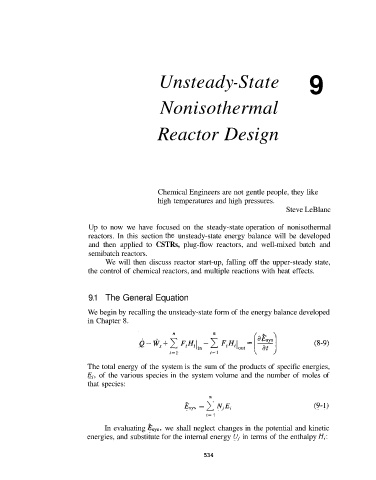Page 564 - Elements of Chemical Reaction Engineering Ebook
P. 564
Unsteady State 9
-
Nonisothermal
Reactor Design
Chemical Engineers are not gentle people, they like
high temperatures and high pressures.
Steve LeBlanc
Up to now we have focused on the steady-state operation of nonisothermal
reactors. In this section the unsteady-state energy balance will be developed
and then applied to CSTRs, plug-flow reactors, and well-mixed batch and
semibatch reactors.
We will then discuss reactor start-up, falling off the upper-steady state,
the control of chemical reactors, and multiple reactions with heat effects.
9.1 The General Equation
We begin by recalling the unsteady-state form of the energy balance developed
in Chapter 8.
The total energy of the system is the sum of the products of specific energies,
Ei, of the various species in the system volume and the number of moles of
that species:
n
ksYs = NiEi (9- 1)
i= 1
In evaluating ksysYs, shall neglect changes in the potential and kinetic
we
energies, and substitute for the internal energy U, in terms of the enthalpy Hi:
534

